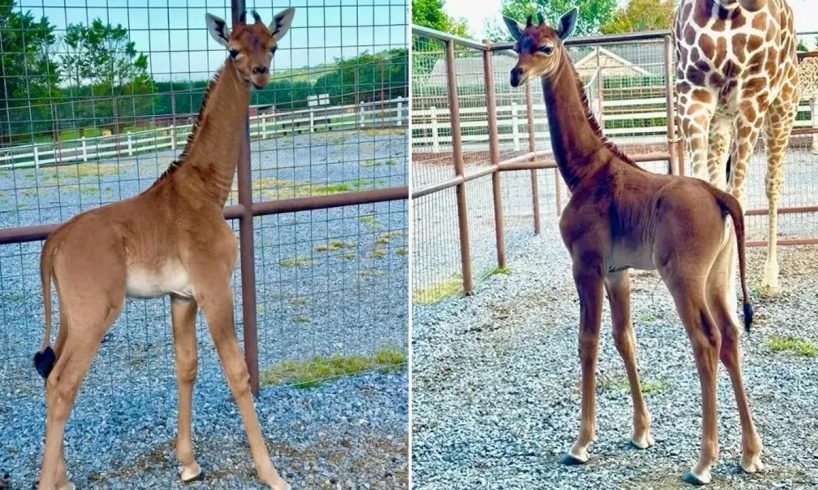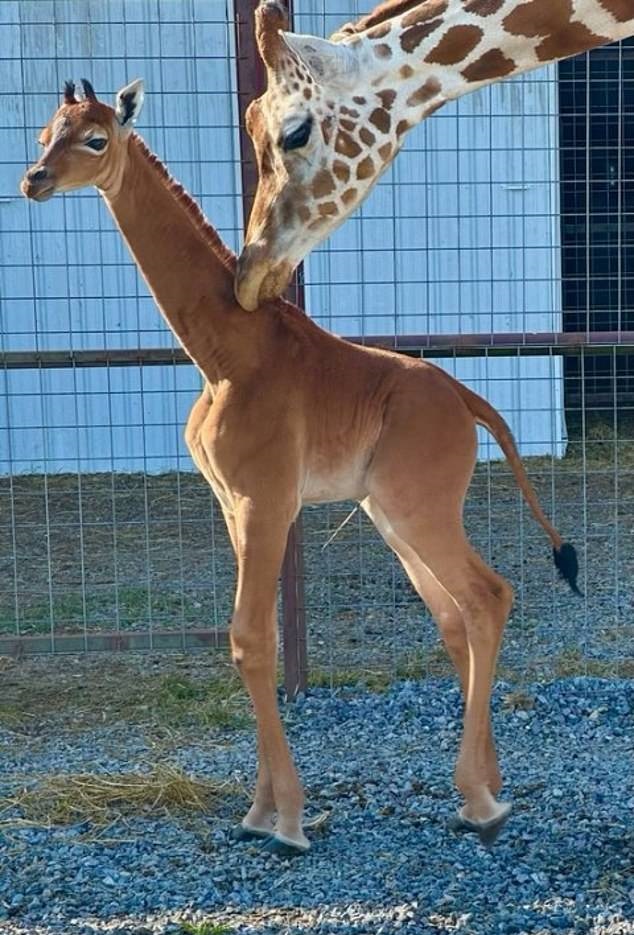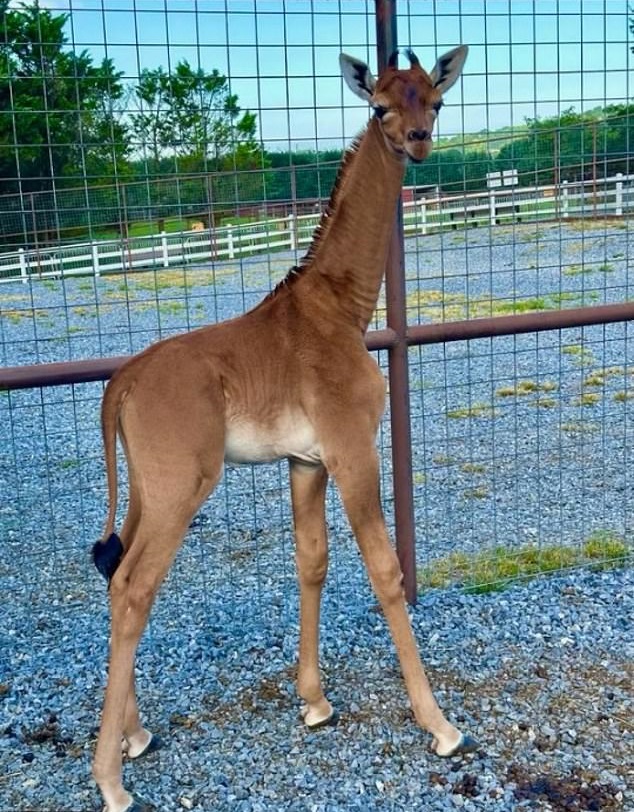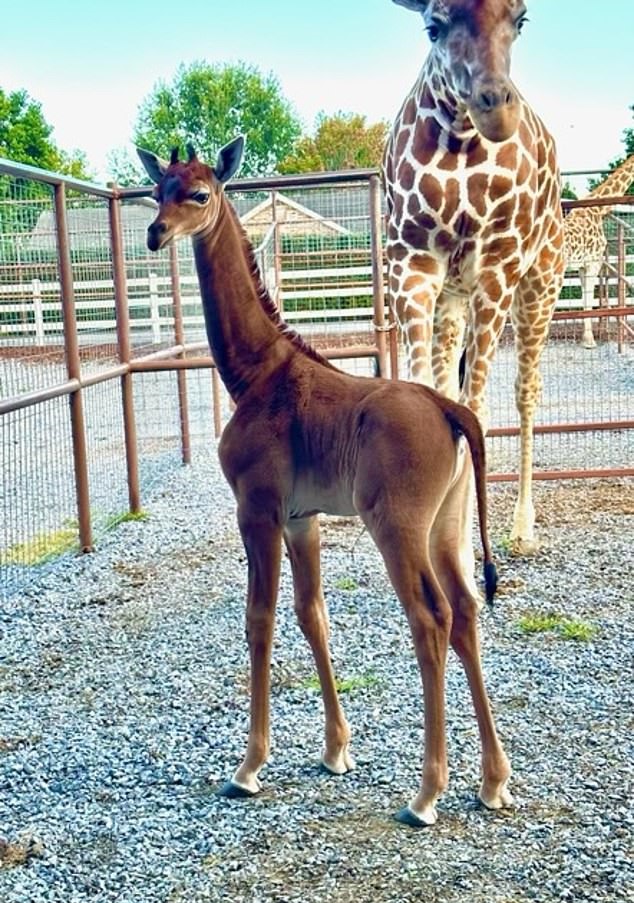
Giraffes are majestic animals and eye-catching due to their height. They have unique spots on their body that distinguish them from the rest of the animals. Inquisitive people have expressed their curiosity if these marvelous creatures are descendants of the Brachiosaurus dinosaur, who resembles the giraffe due to their long necks. After some research, it was discovered that the giraffe does not even come close to being related to dinosaurs.
Recently, a rare “spotless” baby giraffe was born. It had no markings and only had a solid color all over its body. Local zoologists claim that it is the ‘only one’ in the world!

Foreign media reports that the female reticulated giraffe was born on July 31, 2023, at the Brights Zoo in Limestone, Tennessee, USA. Not long after she was born, the staff at the zoo measured her height at 6 feet (about 183 cm). She is tended to by her mother and zookeepers.

Giraffes are rarely born without spots. In the wild, the markings on their body are a necessity. Being a protective color, the skin under each spot has a vascular system, allowing the giraffes to dispel heat through each spot to regulate their body temperature. Although there were reports of giraffes being born in the past with a solid color, the spotless baby calf in Brights Zoo has a solid brown color all over her body and she is considered unique. Other giraffes born spotless have a condition called Leucism.
According to Wikipedia, Leucism is a wide variety of conditions that result in the partial loss of pigmentation in an animal—causing white, pale, or patchy coloration of the skin, hair, feathers, scales, or cuticles, but not the eyes.

Additionally, the patterns of the markings on each giraffe differ, similar to a human fingerprint. These markings do not change with age, so each giraffe can be identified by the experts. Zoologists believe that each special marking is inherited from the mother’s DNA.

Tony Bright, founder of Brights Zoo, claims that the birth of a rare spotless giraffe made a good call to catch the attention of people, in hopes that they may be aware of the peril giraffe breeds face, such as threats by habitat fragmentation and illegal poaching in Africa. “The international coverage of our patternless baby giraffe has created a much-needed spotlight on giraffe conservation,” Mr. Bright said in a statement. “Wild populations are silently slipping into extinction, with 40% of the wild giraffe population lost in just the last 3 decades.”
Brights Zoo currently held a public vote for people to name the solid-colored giraffe. Among thousands of entries, 4 were chosen, and the names were all a nod to Swahili, a language spoken in East Africa where reticulated giraffes originated. The candidate names are: “Kipekee,” meaning ‘unique’, “Friyali,” meaning ‘extraordinary’, “Shakiri,” meaning ‘she is most beautiful’, and “Jamella,” meaning ‘one of great beauty’.
Credits to: WJHL/YouTube
Images credits: © Brights Zoo/Facebook






